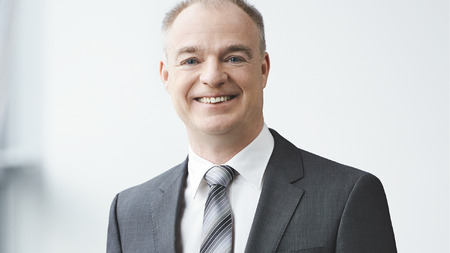60 Years of the Linz-Donawitz Process: Legacy and Challenge
For the 2012-13 business year just begun, voestalpine is increasing R&D expenditure to a record level of EUR 132 million.
For the 2012-13 business year just begun, voestalpine is increasing R&D expenditure to a record level of EUR 132 million.
Despite economic crises and cost reduction programs, over the past decade expenditure in this key area has increased by 11% p.a. on average. 60 years have passed since the Linz-Donawitz (basic oxygen) process was developed, and the group intends to continue to extend its technological advantage.
The record budget of EUR 132 million once again represents a EUR 10 million increase on the year before. This clear commitment reflects an ongoing progressive R&D strategy. "Specialization, technology and quality leadership have been and continue to create a solid basis for our future. Innovation, research and development therefore have top priority within the group. Every euro spent in this area is well spent," comments voestalpine-CEO Wolfgang Eder. "It is only a matter of time before the high R&D investment makes a significant contribution to strengthening the group's leading market position in high-quality and margin-enhancing segments. The Linz-Donawitz process, a once-in-a-century invention, was the original basis for voestalpine's leading position in metallurgy and ensured that the group continued to be oriented to quality and technology. It is both a legacy and a challenge for subsequent generations."
Today, the voestalpine Group is a global high-tech player with international technology and quality leadership in demanding product segments. Maintaining this leadership position requires intensive ongoing innovation. Accordingly, voestalpine is Austria's most research-intensive company with 670 employees in R&D alone (not including IT and quality assurance).

This record R&D budget will strengthen our position as a globally important partner to universities and university research institutions, as well as our development partnerships with numerous key customers.
voestalpine also plays an important role as an employer of well-qualified university graduates and in providing ongoing supervision of over 150 university theses and dissertations.
60 years since it was developed in Linz, the Linz-Donawitz process continues to be of enormous significance. In 2011 the world produced 1.5 billion tons of steel; around 1 billion tons of this were produced using technologies based on the Linz-Donawitz process.

The Linz-Donawitz process remains a symbol of what makes voestalpine excellent and what its employees stand for: making possible what seemed impossible, tackling problems that initially appeared insoluble, and developing new perspectives in response to challenges.
In the years ahead the group will continue to maintain its clear strategic orientation to cutting-edge technology, superior quality products and an added value chain longer and more comprehensive than those of competitors. "The group will continue to push ahead in expanding R&D capacity, and in future will position itself even more clearly as a global driving force in technology, particularly in the areas of mobility and energy," says Eder.
voestalpine is a globally active group with a number of specialized and flexible companies that produce, process and further develop high-quality steel products. The Group is represented by 360 production and sales companies in more than 60 countries. With its highest quality flat steel products, voestalpine is one of Europe's leading partners to the automotive, white goods, and energy industries. Furthermore, voestalpine is the world market leader in turnout technology, tool steel, and special sections, as well as number one in Europe in the production of rails. In the business year 2010/11, the voestalpine Group generated revenues of around EUR 11 billion, and achieved an operating result (EBIT) of almost EUR 1 billion; the Group has around 47,000 employees worldwide.